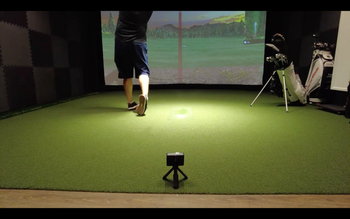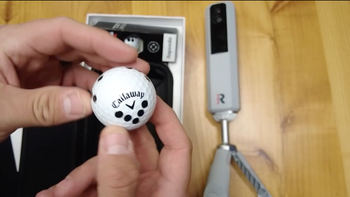The real answer to when your golf season wraps up comes down to where you're teeing it up players in places like Minnesota or Wisconsin have to hang up their clubs completely when November rolls around thanks to snow and freezing conditions. If you're swinging in Florida or South Carolina, you're basically playing twelve months straight, though those summer afternoons get so humid you'll want to book dawn patrol instead. Arizona's desert courses hit their sweet spot between January and March, but mountain tracks shut down from November to February. Let's dig deeper and see how USGA handicap rules and local economics affect when your home course stays open.
Table of Contents
Weather Patterns That Control How Long You Can Play
Planning your golf year means understanding that Mother Nature calls the shots based on your zip code. The weather in your area controls when your local tracks open their gates and when they lock them up for winter.
Here's what you're dealing with: warm coastal spots like Florida and California let you play basically every day since it hardly ever freezes. You're looking at 300-plus days of golf weather! But if you're playing mountain courses, winter's a beast heavy snow and late melts mean you're only getting March to November, and sometimes they'll shut down in mid-November no matter what the thermometer says.
Desert golf's got its own quirks: winter's perfect for late-season rounds, but summer heat forces you into sunrise tee times. Arizona's prime time? January to March when you can actually finish 18 without melting. Areas with changing climates get March-to-November windows, with spring and fall serving up the best conditions.
Up in the Northeast, players usually can't get out until late April, which gives everyone a solid starting point for planning their season and getting their gear ready.

Northern Golf: When Winter Shuts Everything Down
Up north, winter doesn't just slow things down it completely stops golf in its tracks. You'll see your home course lock the gates when November starts as snow and ice make playing flat-out dangerous. Places like Minnesota and Wisconsin don't joke around they close up shop quickly and completely.
Here's what happens: everything changes fast in late October. Your local track cuts back on staff and shortens hours before closing altogether. They're not overreacting they're saving their greens and gear from getting destroyed by nasty weather.
During the freeze, you're stuck watching courses prep for winter and plan next year's improvements. Some players head to simulator bays or fly to warmer spots. Smart golfers use the break to get their clubs regripped and snag early-bird deals for next year! Those morning frost delays signal the end's near and winter's taking over. Each state's official golf organization sets the exact dates for the off-season, making sure all public and private courses follow the same schedule.
Southern Golf: Playing Through Winter and Beyond
They're shoveling driveways up north while you're still making birdies down south where the season runs from February clear through November, sometimes longer! Places like South Carolina, Georgia, and Florida let you play all year, so you could literally tee off on January 1st. Yeah, July and August turn into sweatfests with that sticky humidity, but if you're determined, you can still get out there. Your best bet: spring (March-June) and fall (September-November) serve up ideal playing weather. Off-season pricing from mid-November to February helps your bank account, too. South Carolina's got more than 350 tracks, so you'll always find somewhere to play, just trade your winter gear for SPF 50! January along the coast surprises you with plenty of 60-degree afternoons, making winter rounds pretty comfortable. Checking out course difficulty ratings helps you pick tracks that match your game throughout the extended season.
USGA Handicap Rules for Different Parts of the Country
Getting familiar with when you can post scores for your USGA handicap means understanding your area's official playing season because yeah, there's actually a set window when your rounds count toward your index!
Your address makes all the difference. Cold-weather states like Alaska, Minnesota, and Wisconsin stop accepting scores on October 31, but states like Colorado, Maryland, and Massachusetts give you until November 14. Living in Arizona or Texas? You're posting scores all year long!
Starting dates change too. Idaho and Indiana players can start posting March 1, but Connecticut and Massachusetts golfers wait for April 1. Pennsylvania players begin April 1 and keep going through November 14 according to their local golf association.
This setup keeps your handicap accurate by making sure you're only posting rounds when courses maintain proper playing conditions. The Chicago area kept their dates mostly the same as last year, with every other state sticking to their 2023 schedule.

How Seasonal Golf Affects Course Revenue
Golf courses can't change the weather, so they've figured out clever ways to enhance profits during their playing seasons and the results prove it's paying off big time! Even though 7% fewer courses exist now than in 2016, the sport's direct financial contribution hit $102 billion that's 20% growth showing smart beats big.
What's going on: Each course now handles 34,000 rounds per year on average, cramming more players into tighter windows. You'll notice courses pushing winter deals and special offers to fight seasonal slowdowns. This approach succeeds because golf's complete financial impact hits $226.5 billion after adding in travel, property values, and hotels. Seasonal planning keeps those 1.65 million golf jobs going all year, showing that modification brings serious rewards.
The business has also recognized golf's significance as outdoor exercise after COVID, with many facilities extending schedules using heated ranges and indoor options to meet growing demand for fresh-air fitness. Trade groups collaborated with state officials to keep courses accessible during tough times, maintaining financial benefits for surrounding areas.
Frequently Asked Questions
Is It Safe to Play When the Course Is Frozen?
Playing on frozen ground comes with significant considerations! Once temperatures hit 32°F or lower, your footprints and cart tracks can really mess up the grass. Lots of courses use temporary winter greens to save their main putting surfaces. When frost goes deeper than 3 inches, you'll probably see playing restrictions. Always call the clubhouse first; they'll let you know what's playable and what's off-limits.
What Should I Wear When It's Cold Out There?
Layer up the right way for chilly rounds! Begin with thermal underwear, then throw on a rain-resistant windbreaker that lets you swing freely. Golf pants with insulation protect your legs, and waterproof golf shoes with solid traction tackle damp fairways. Grab some winter golf gloves, a beanie, and pocket warmers for waiting between holes. Bring spare gloves because cold, wet ones don't grip worth a darn!
How Can I Stay Sharp When Courses Close?
Keep your game sharp using heated ranges and home practice. Work on your swing at indoor facilities and try golf apps that analyze your motion. Stay golf-fit doing pushups, stability work with exercise balls, and stretching routines to maintain flexibility. Work on your mental game too picture your shots and review course strategies. Weight training and running will enhance your driving distance when spring arrives!
Where Can I Find Golf Simulators for Winter Practice?
You've got good odds of finding golf simulators close by, particularly near cities or in cold-weather states. These spots keep getting more common and let you practice all winter using high-tech swing tracking and famous course replays. Look around at golf shops, athletic clubs, or fun centers – tons of them have simulator setups now. Cities usually offer more choices, and northern towns see bigger crowds during winter for obvious reasons!
When's the Right Time to Put My Clubs Away?
Pull your clubs out of action around late October or early November, basically when northern courses start shutting their doors. Give your irons and woods a good scrubbing, then hit them with anti-rust protection to stop damage. Clean your golf balls and keep them somewhere cool without moisture. Take care of your gloves and bag too – wash them properly to avoid nasty mold! Keep all your stuff in a dry spot so it's fresh for opening day.
Conclusion
When your golf days end totally depends on your home turf! Northern players usually pack it in by late October once it drops under 40°F. Southern golfers might keep playing through December or just never quit. Double-check when your local tracks close and review those USGA season dates for planning. Hey, even after courses shut down, there's nothing stopping you from rolling putts on your living room carpet!





